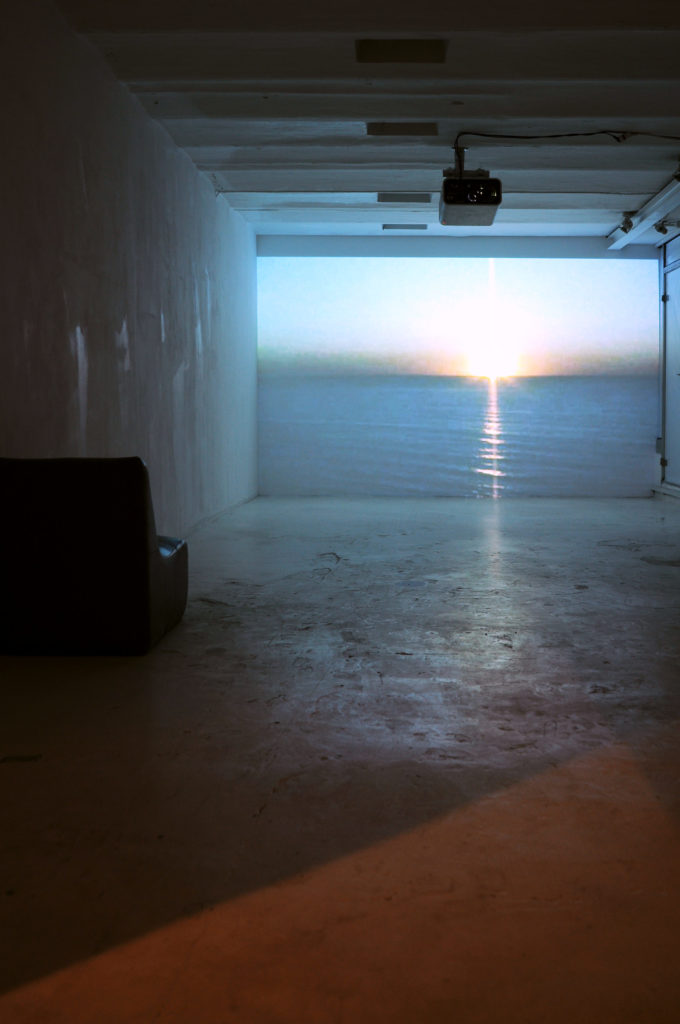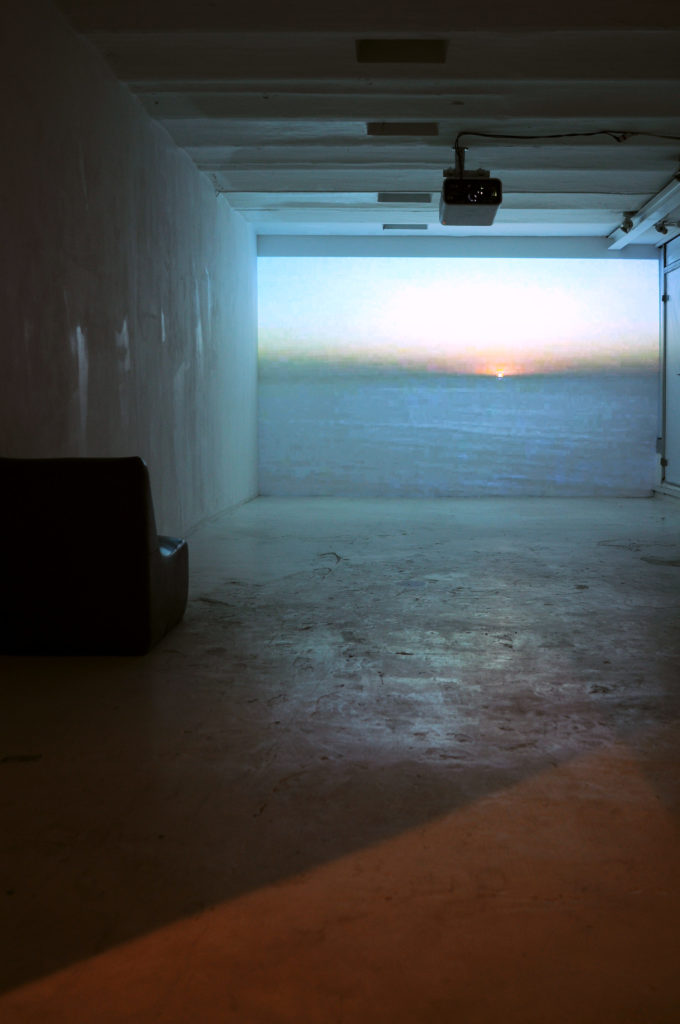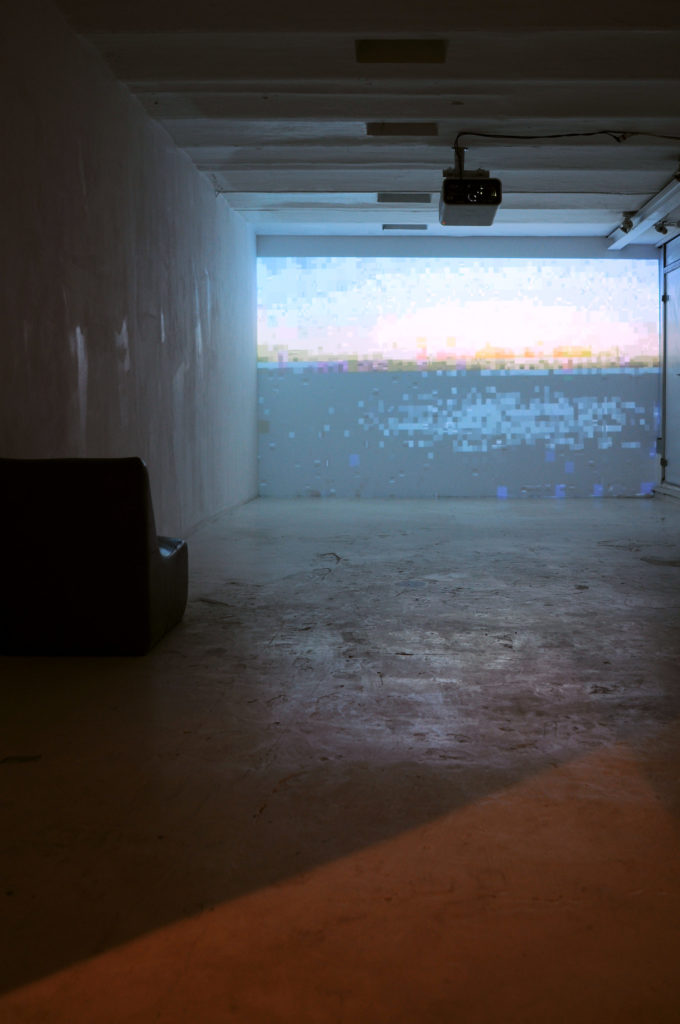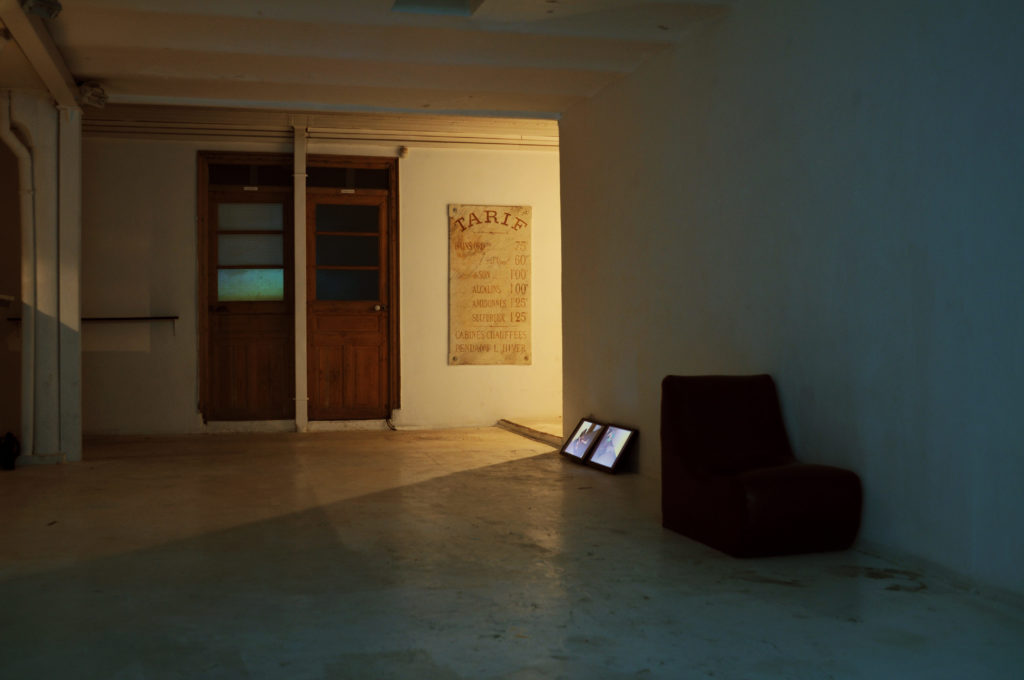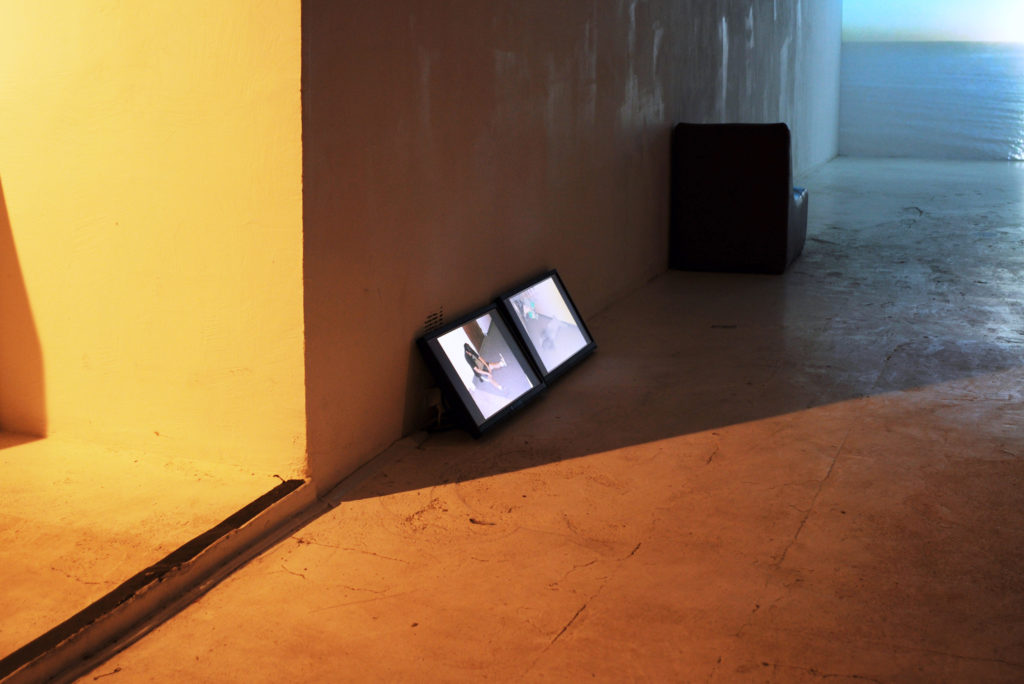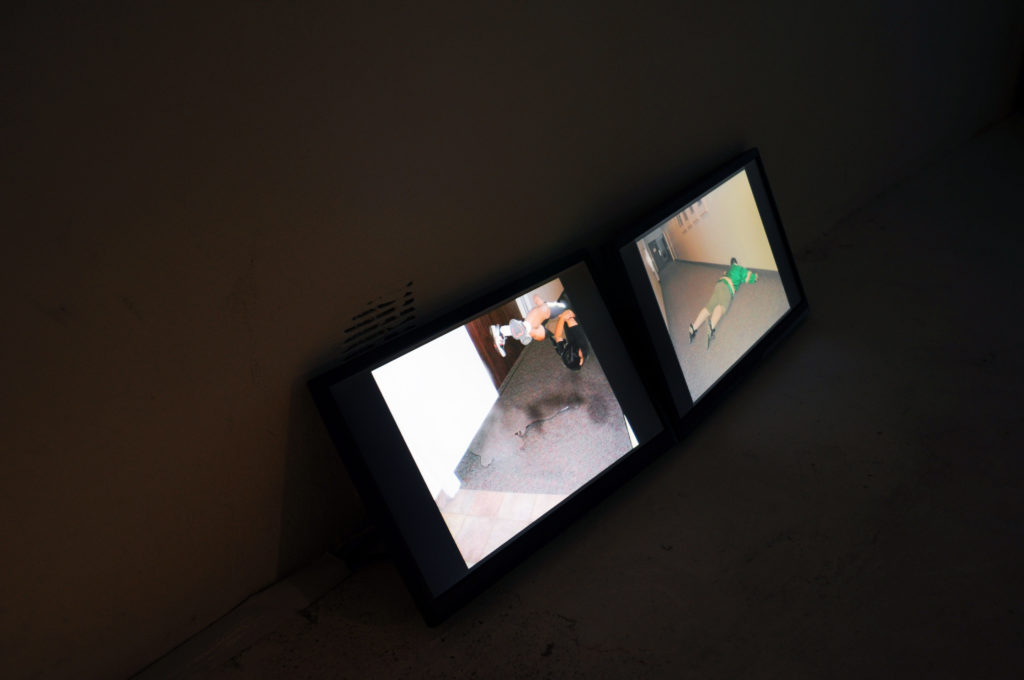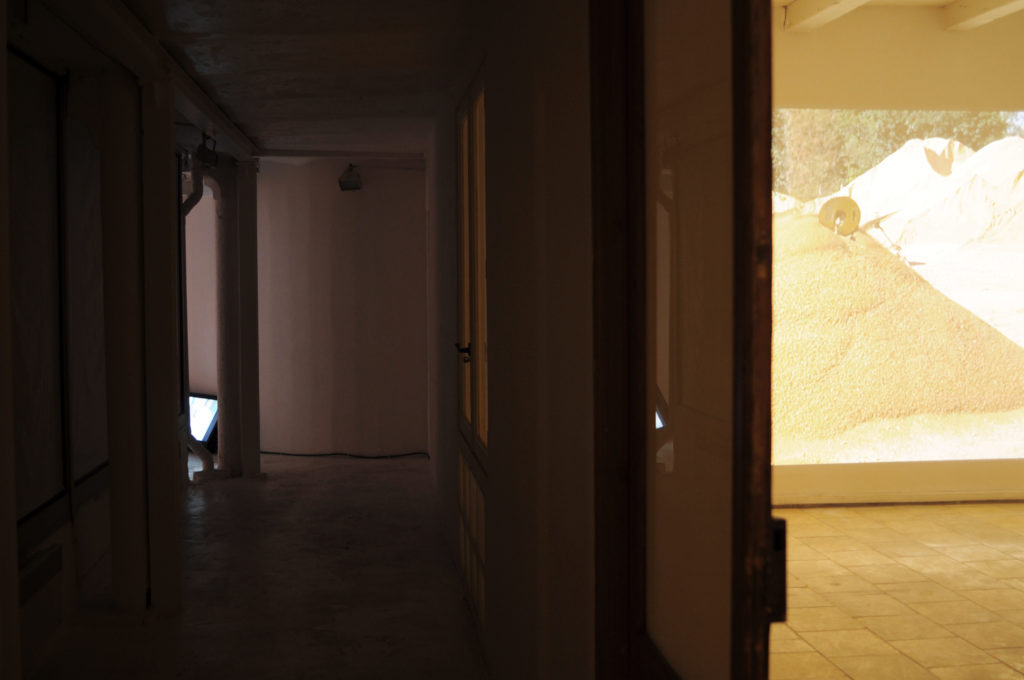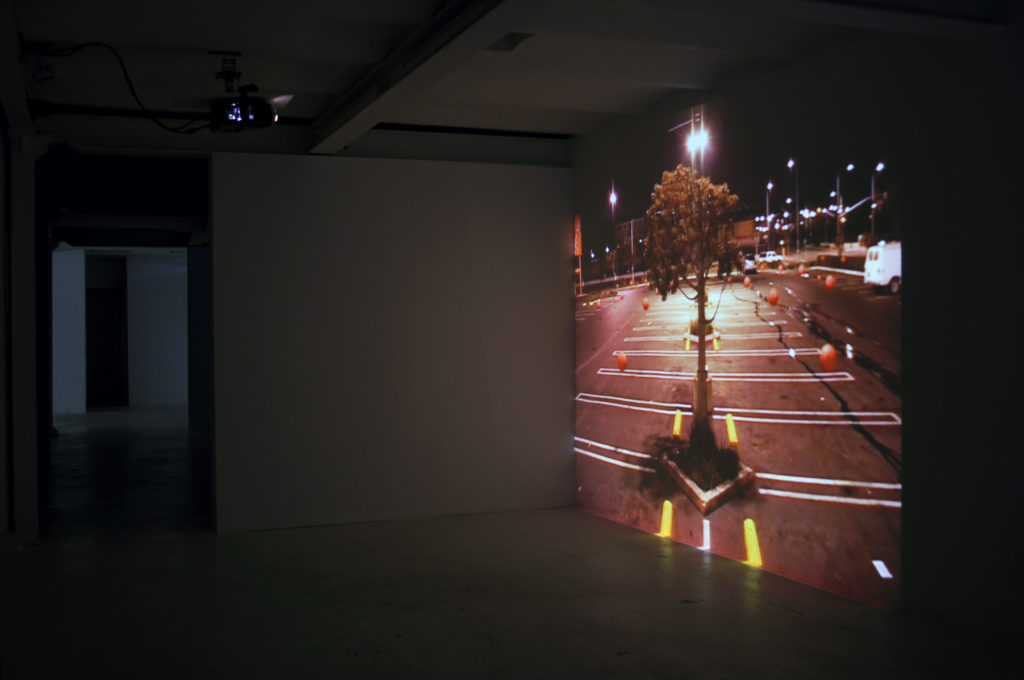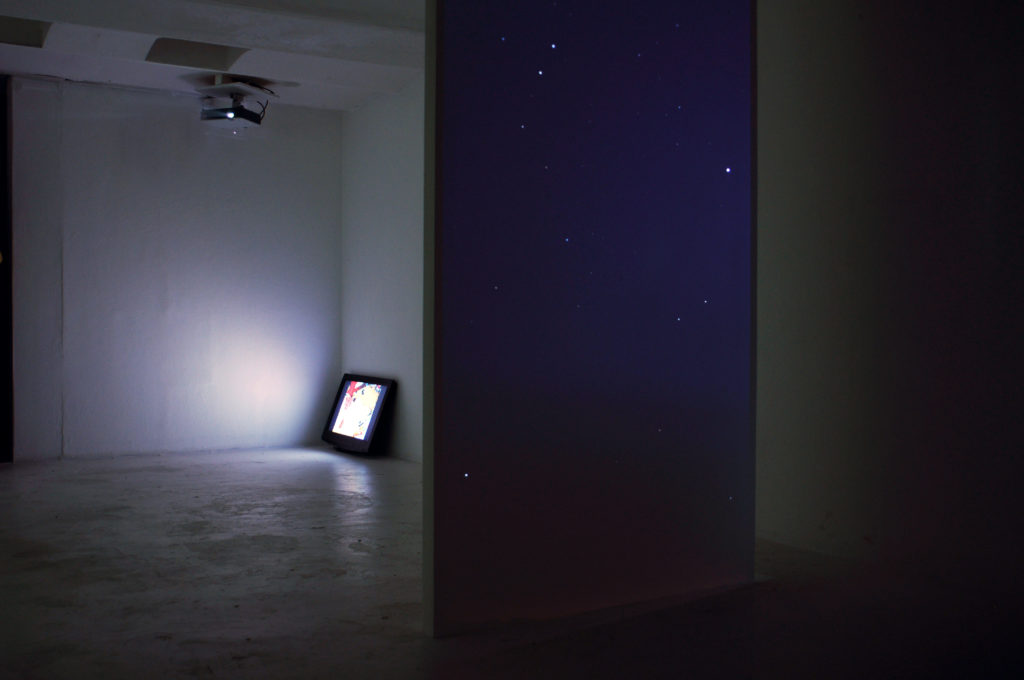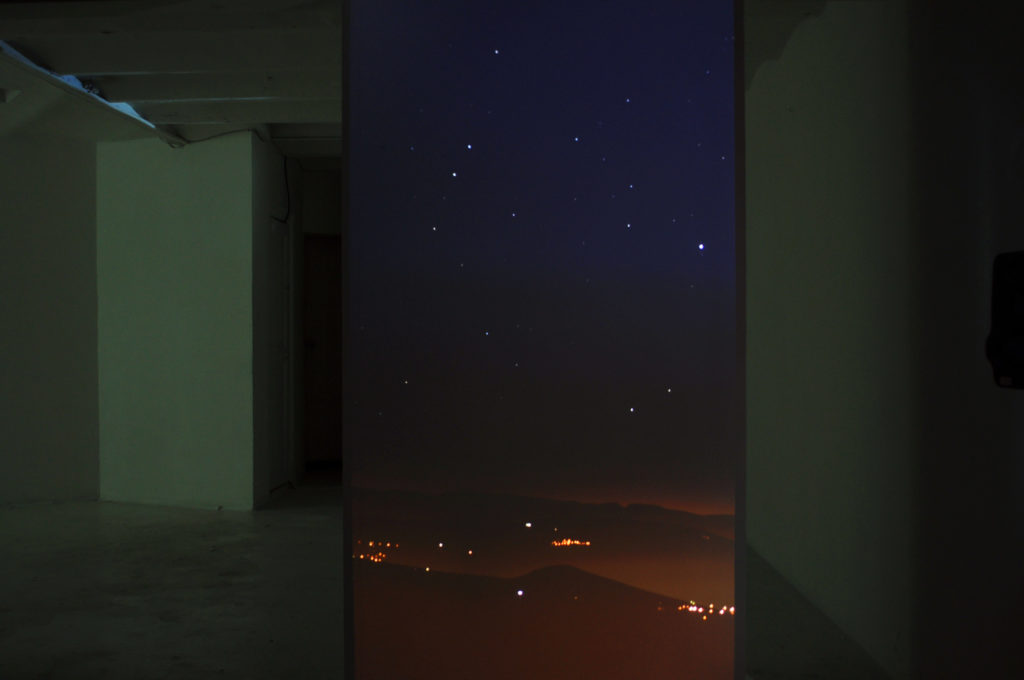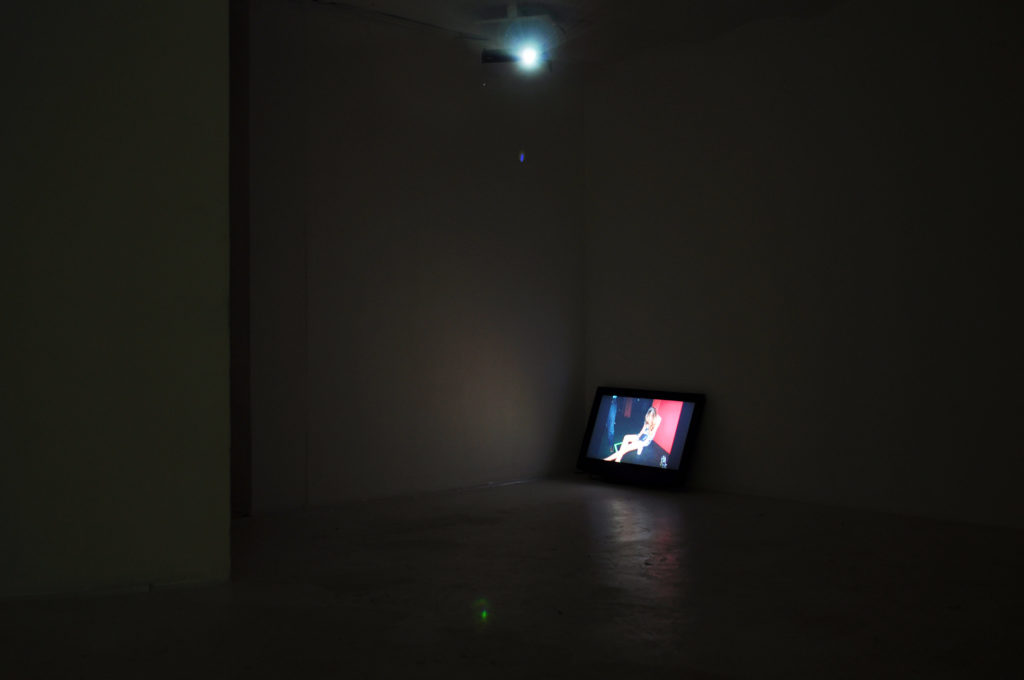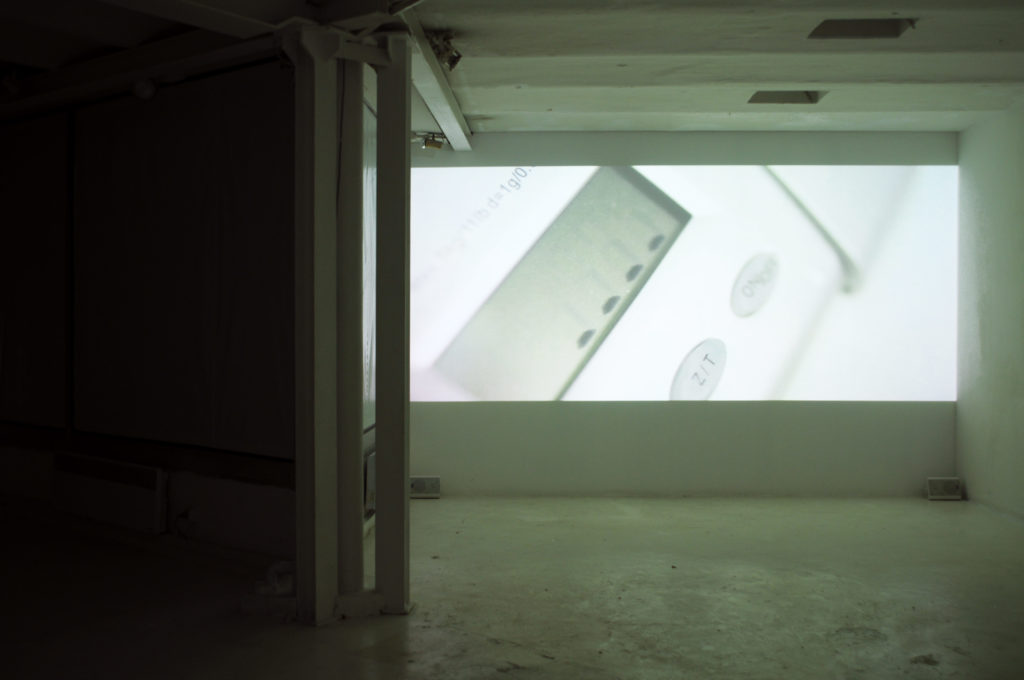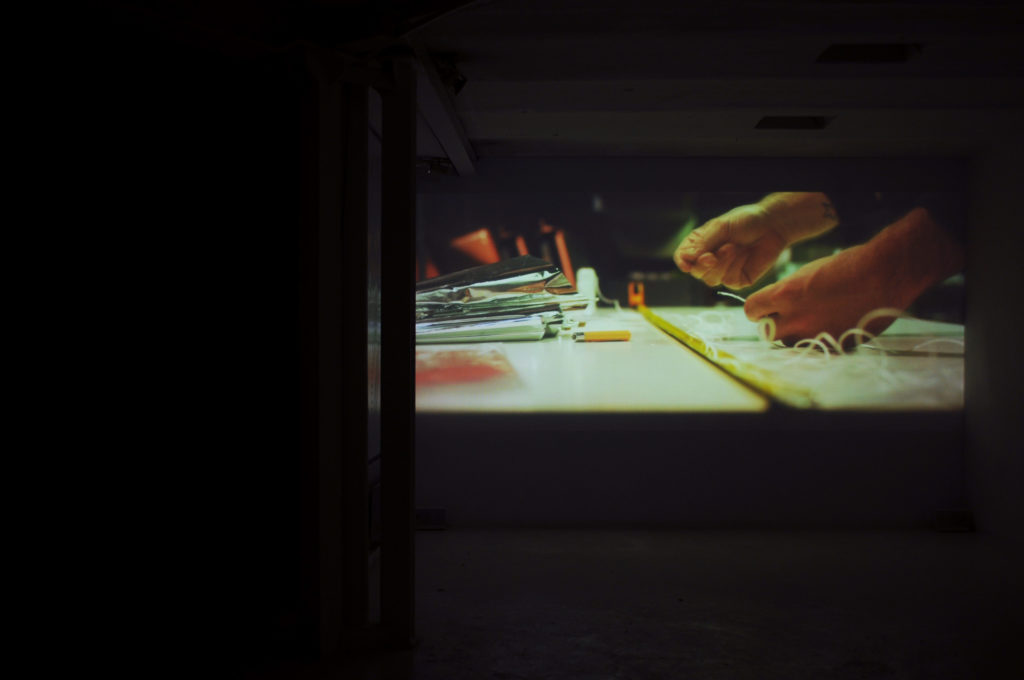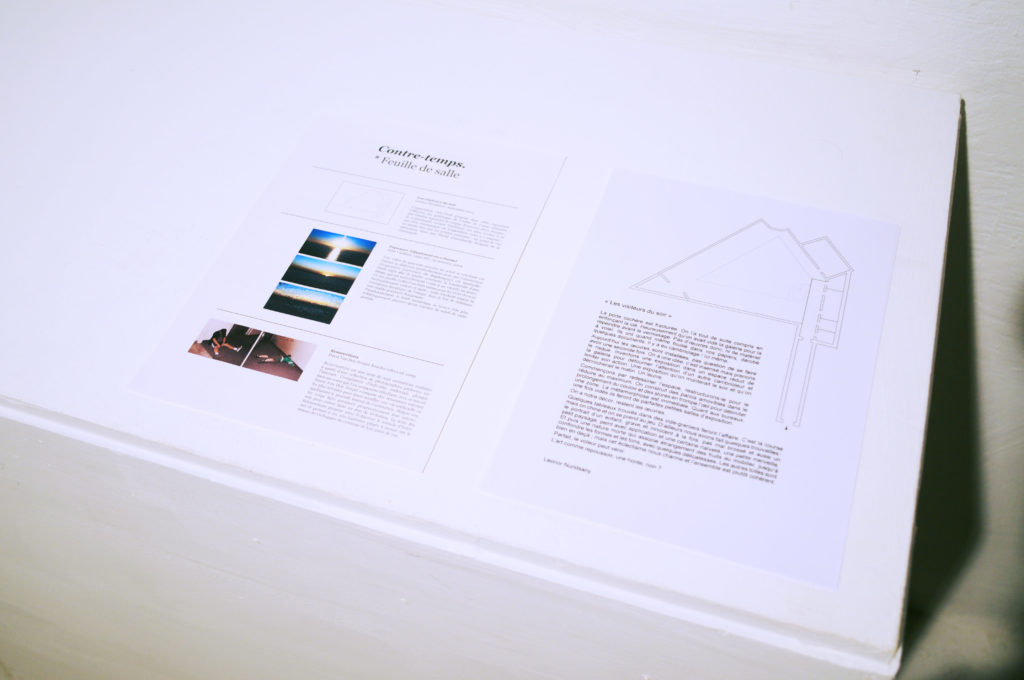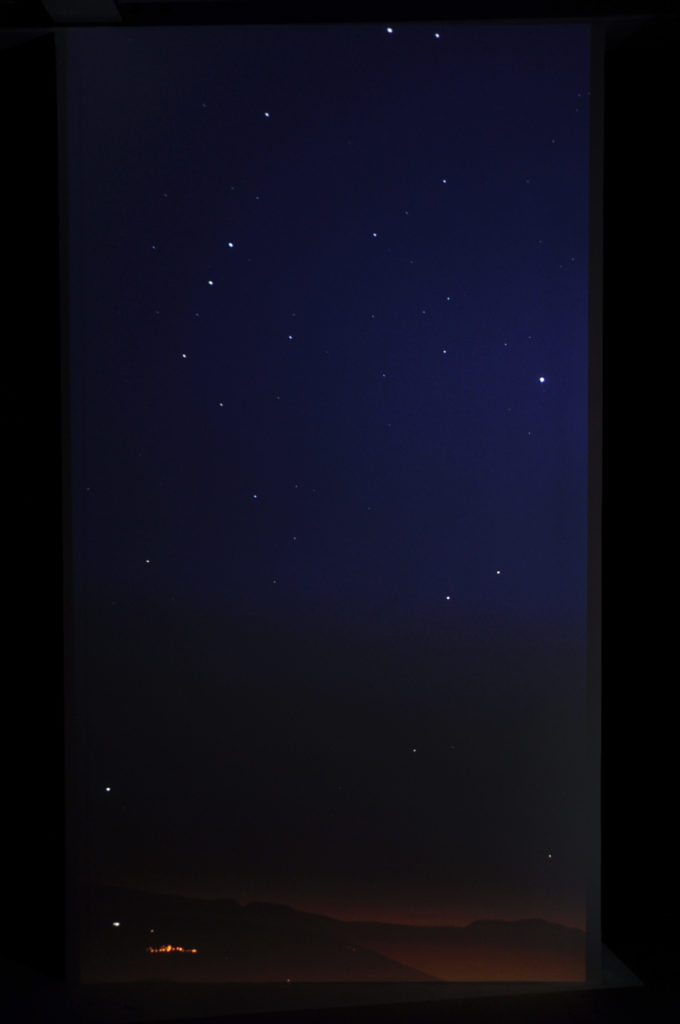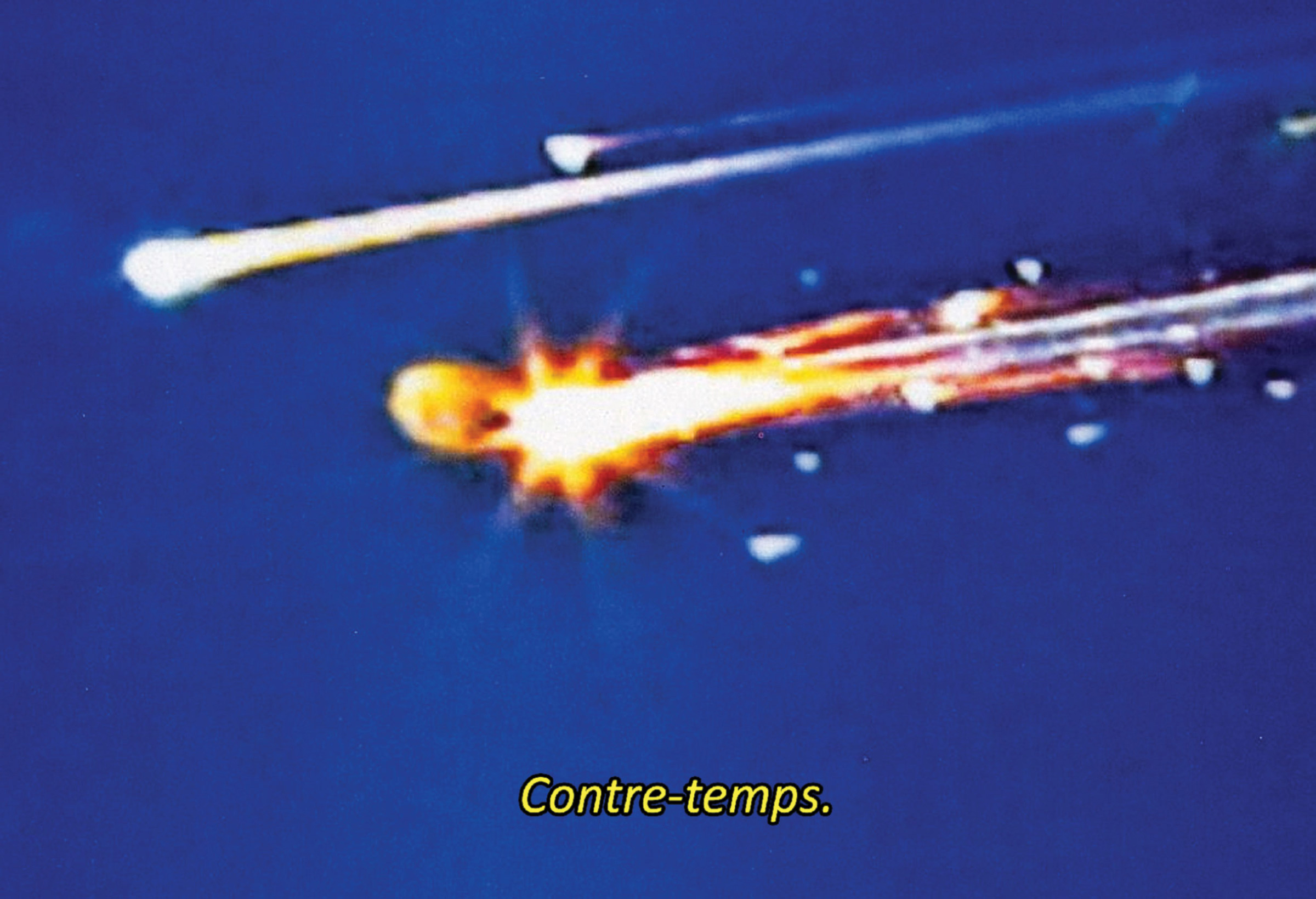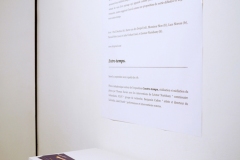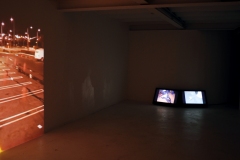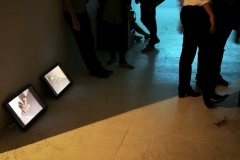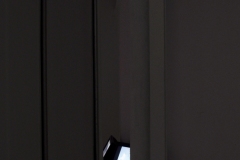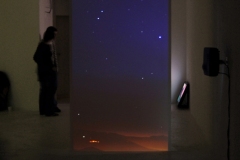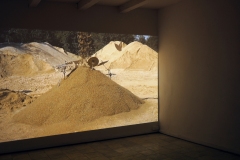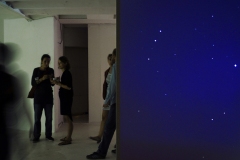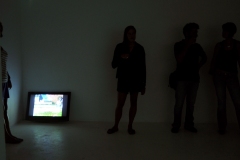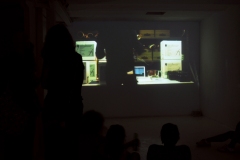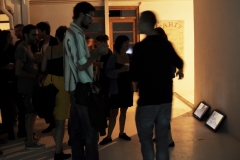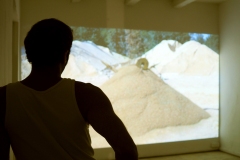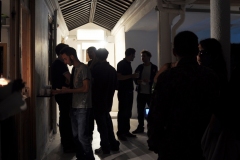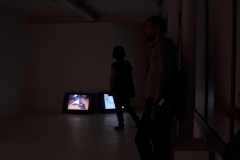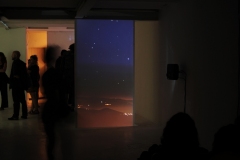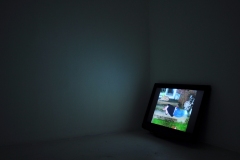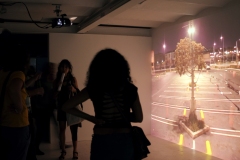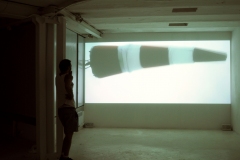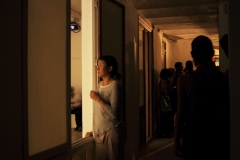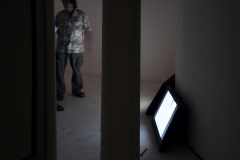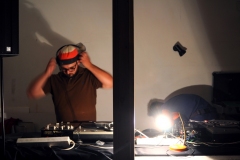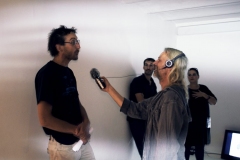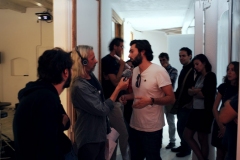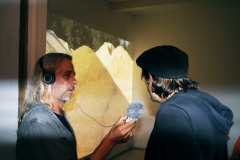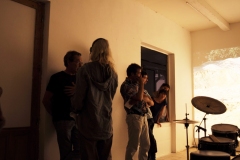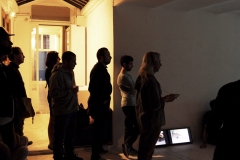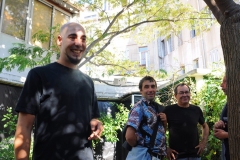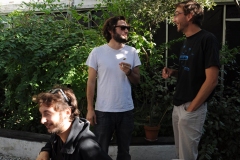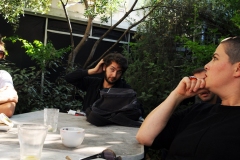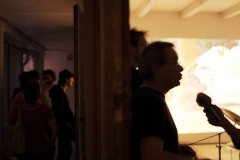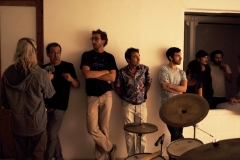Contre-temps
CONTRE-TEMPS
EXPOSITION COLLECTIVE À LA GALERIE DES GRANDS BAINS DOUCHES, MARSEILLE – GROUP SHOW AT GALERIE DES GRANDS BAINS DOUCHES, MARSEILLE
*
AVEC LES ARTISTES – WITH THE ARTISTS:
PAUL DESTIEU (FR), HARM VAN DEN DORPEL (NL), MAXIME BERTHOU (FR), LUCE MOREAU (FR), PASCUAL SISTO (USA), ARTIE VIERKANT (USA). FICTION DE LEONOR NURIDSANY (FR)
ENTRE-TEMPS : PLATEAU RADIOPHONIQUE PAR XAVIER THOMAS & PERFORMANCES
*
AVEC LES INTERVENTIONS DE – WITH INTERVENTIONS BY:
LÉONOR NURIDSANY, BENJAMIN CADON, JEAN CRISTOFOL, PAUL-EMMANUEL ODIN, LUCIEN GAUDION, BERTRAND WOLFF, DAMIEN RAVNICH
Exposition collective : du 01 Septembre au 21 Septembre 2012 – Group show: from August 30th to September 21th 2012
Vernissage : jeudi 30 Août 2012 à partir de 19h avec DJ Set musical d’OTH – Opening: Thursday August 30th Août 2012, starting at 7 p.m. with a DJ set by OTH
ENTRE-TEMPS : Tour radiophonique & Performances – Radio Tour & Performances
Samedi 15 Septembre 2012, à partir de 17h à Art-Cade, Galerie des grands bains douches – Saturday, September 15th, 2012, staring at 5p.m. at Art-Cade, Galerie des grands bains douches
L’exposition collective Contre-temps se lit dans le sens inverse de celui de votre montre ; comme le font les effets de la volta – saut en spirale permettant d’immobiliser le temps – les œuvres évoluent en temps réel et court-circuitent ainsi celui imparti au parcours d’exposition.
Les pièces présentent autant de tentatives de désertion, autant de champs dont la figure humaine est décentrée, et lesquels se voient expérimentés jusqu’à l’offensive et l’altération.
L’obsolescence a rattrapé l’œil vidéo qui n’est plus à même d’exposer clairement la frontière entre science et fiction ; c’est dans cette faille que s’engouffrent les artistes exposés pour concevoir une réanimation technologique, une mise en lévitation artificielle de la matière à des fins plastiques et performatives. Les œuvres vidéos ici rassemblées poussent leur medium jusqu’à ses différents paroxysmes et proposent par l’éveil de l’outil autant de vues d’un paysage qui apparait comme post-humain.
Dans une temporalité ressaisie, toutes suggèrent l’envol comme une proposition de sortie définitive et la gravité comme son contre-temps.
The group exhibition Contre-temps reads in the opposite direction to your watch; like the effects of the volta – a spiral jump that allows time to be frozen – the works evolve in real time, thus short-circuiting the time allotted to the exhibition tour.
The pieces present as many attempts of desertion, fields in which the human figure is decentralized, and which are experienced up to the offensive and alteration gestures.
Obsolescence has caught up with the video eye, which is no longer able to clearly expose the boundary between science and fiction; it is into this gap that the artists rush to conceive a technological reanimation, an artificial levitation of matter for visual and performative purposes. The selected works push the medium of video to its various extremes and, through the awakening of the tool, offer as many views of post-human landscapes.
In a regained temporality, they all suggest flight as a proposal for a definitive exit and gravity as its counterpoint.
PROGRAMME
Exposition collective : du 01 Septembre au 21 Septembre 2012
Vernissage : Jeudi 30 Août 2012 à partir de 19h avec DJ Set musical d’OTH
ENTRE-TEMPS :
Samedi 15 Septembre 2012, à partir de 17h à Art-Cade, Galerie des grands bains douches
Tour radiophonique & Performances
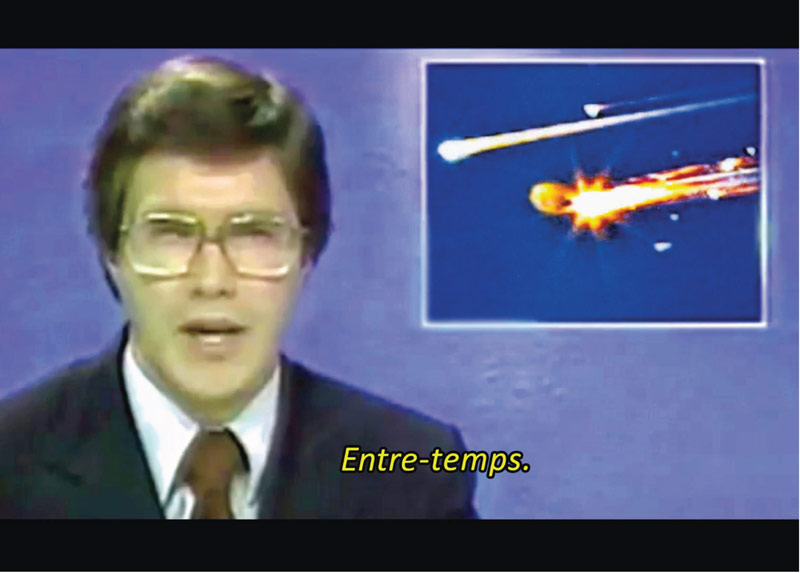
~ PLATEAU RADIOPHONIQUE autour de l’exposition Contre-temps à suivre sur Radio Grenouille * 88,8 FM. ~
« Déambulation parmi les oeuvres de Paul Destieu, Harm van den Dorpel, Maxime Berthou, Luce Moreau, Leonor Nuridsany, Pascual Sisto, Artie Vierkant.
Une conversation contre-nature en contre-champ des œuvres et des contre-temps, qui dérive sur l’apesanteur, l’inversion temporelle et la lévitation, le bruit d’images et la fin du monde… Tout un programme ! »
Par Xavier Thomas.
OTTO-Prod invite le public ainsi que les auditeurs de Radio Grenouille à suivre Xavier Thomas pour une visite satellite de l’exposition, discutée par : Léonor Nuridsany (commissaire indépendante), Benjamin Cadon (artiste et directeur de la Labomedia), Jean Cristofol (co-fondateur du projet Plot et Lévitations), Paul-Emmanuel Odin (auteur de l’Inversion temporelle dans le cinéma, directeur de La Compagnie), Lucien Gaudion et Bertrand Wolff (label daath | 裏 | Etat Etranger), ainsi que Paul Destieu et Luce Moreau pour OTTO-Prod (artistes et organisateurs de l’exposition)
Le public est invité à l’enregistrement de l’émission à 17h depuis les jardins de la galerie, suivi d’une discussion et d’une prolongation apéritive ; l’émission sera diffusée sur Radio-Grenouille, 88.8, le mardi 18 septembre à 18h, puis rediffusée le jeudi 20 septembre à 11h.
Group show: from August 30th to September 21th 2012
Opening: Thursday August 30th Août 2012, starting at 7 p.m. with a DJ set by OTH
ENTRE-TEMPS: Saturday, September 15th, 2012, staring at 5p.m. at Art-Cade, Galerie des grands bains douches
Radio Tour & Performances
~ RADIO PROGRAM about the exhibition Contre-temps to be broadcast on Radio Grenouille * 88.8 FM. ~
« A stroll among the works by Paul Destieu, Harm van den Dorpel, Maxime Berthou, Luce Moreau, Leonor Nuridsany, Pascual Sisto, and Artie Vierkant.
An unnatural conversation set against the backdrop of the works and setbacks, drifting towards weightlessness, temporal inversion and levitation, the noise of images and the end of the world… Quite a program! »
By Xavier Thomas.
OTTO-Prod invites the public and Radio Grenouille listeners to join Xavier Thomas for a satellite tour of the exhibition, discussed by: Léonor Nuridsany (independent curator), Benjamin Cadon (artist and director of la Labomedia), Jean Cristofol (co-founder of Plot and Lévitations project), Paul-Emmanuel Odin (author of Inversion temporelle dans le cinéma, director of La Compagnie), Lucien Gaudion and Bertrand Wolff label daath | 裏 | Etat Etranger), as well as Paul Destieu and Luce Moreau for OTTO-Prod (artists and exhibition organizers).
The public is invited to attend the recording of the program at 5 p.m. by the gallery gardens, followed by a discussion and a reception. The program will be broadcast on Radio-Grenouille, 88.8, on Tuesday, September 18th, at 6 p.m., and rebroadcast on Thursday, September 20th, at 11 a.m.
~ PERFORMANCES SONORES ~
* A partir de 20h, OTTO-Prod invite trois artistes du label Daath à se saisir de trois œuvres présentées dans l’exposition Contre-Temps.
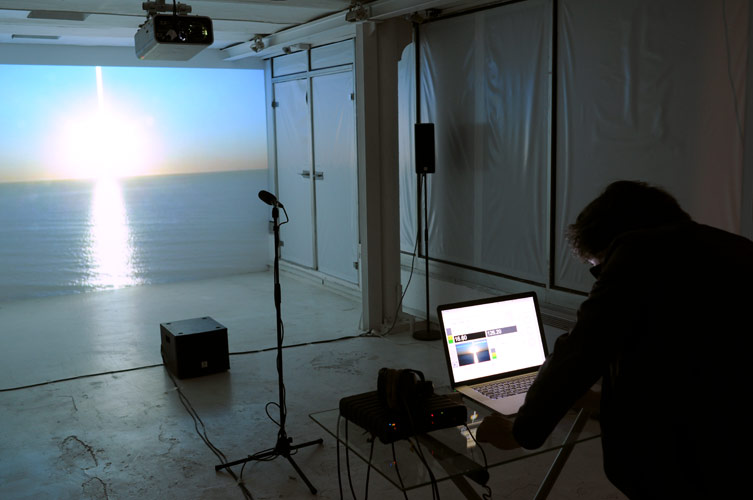
Artie Viertkant ~ Lucien Gaudion : Sound Adjustment on a Sunset ~ 39 min.
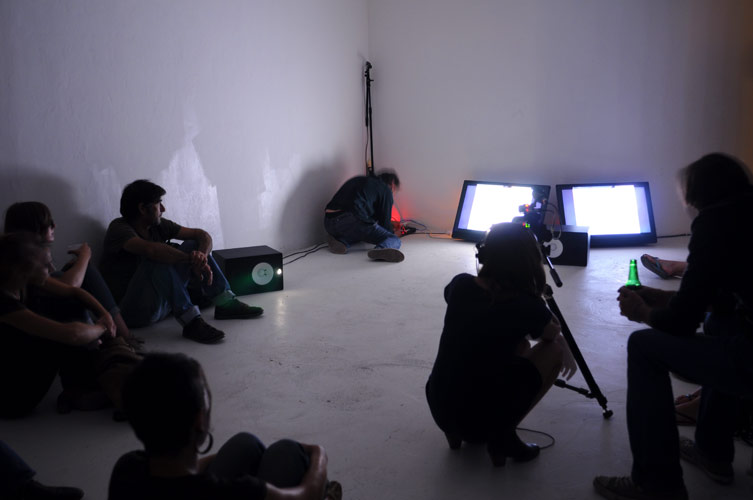
Harm van den Dorpel ~ Bertrand Wolff : Doliprane ~ 12 min.
~ SOUND PERFORMANCES ~
* Starting at 8 p.m., OTTO-Prod invites three artists from the Daath label to take on three works presented in the Contre-Temps exhibition.
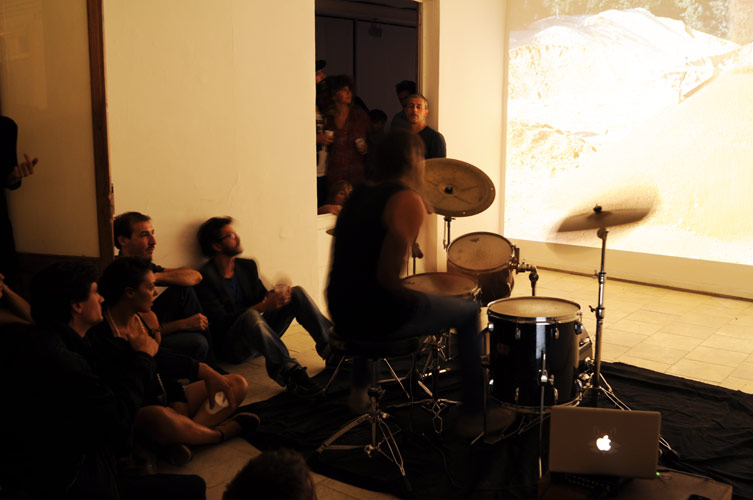
Paul Destieu ~ Damien Ravnich: Burn Out ~12 min.
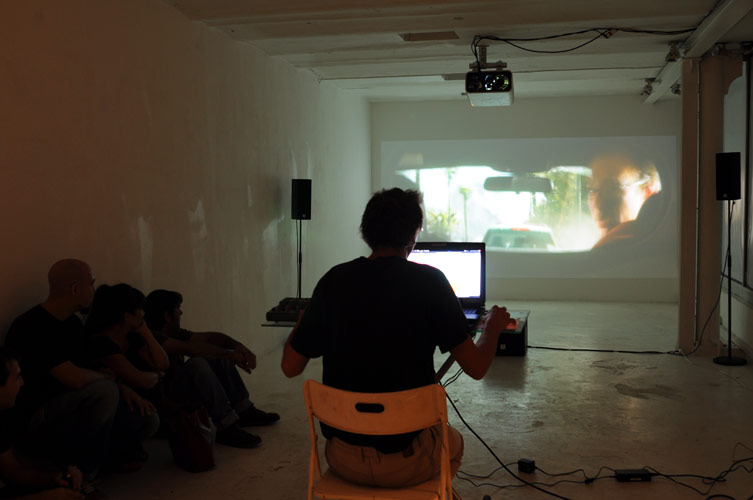
Benjamin Cadon : 2013 ~ 20 min.
PRESSE
Contre-temps dans Ventilo
INFOS PRATIQUES
art-cade*
Galerie des grands bains douches de la Plaine
35 bis rue de la Bibliothèque
13001 Marseille
0033(0)4 91 47 87 92 //
contact[at]art-cade.org
http://art-cade.org
Horaires d’ouverture : du mardi au samedi – de 15h00 à 19h00 et sur rendez-vous.
Opening hours: from tuesday to saturday – from 3p.m. to 7 p.m. and on appointment
DOCUMENTATION
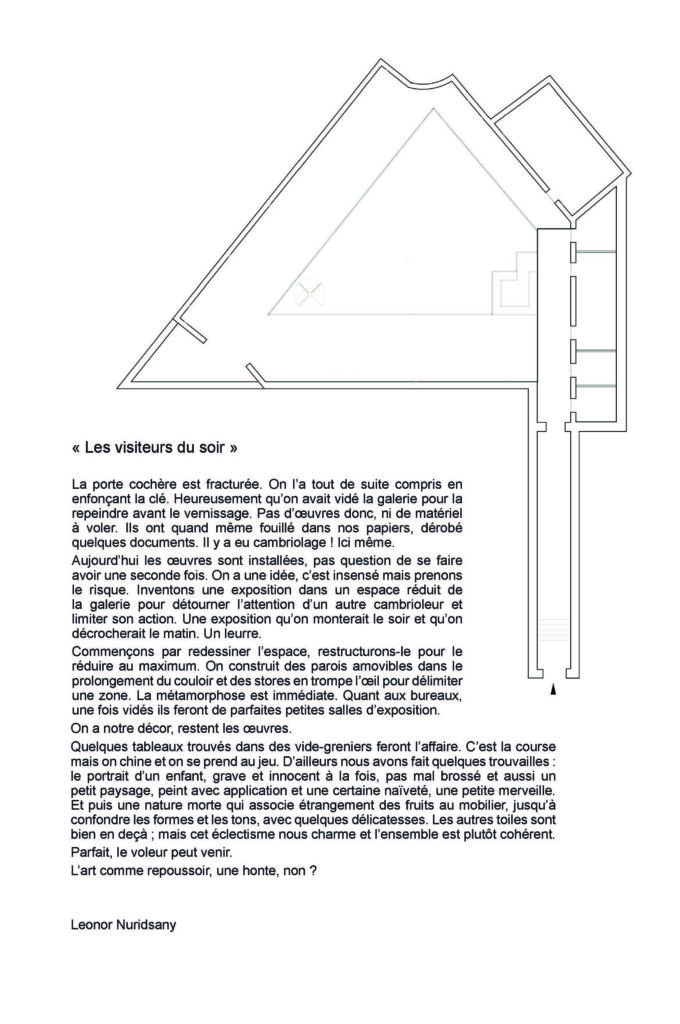
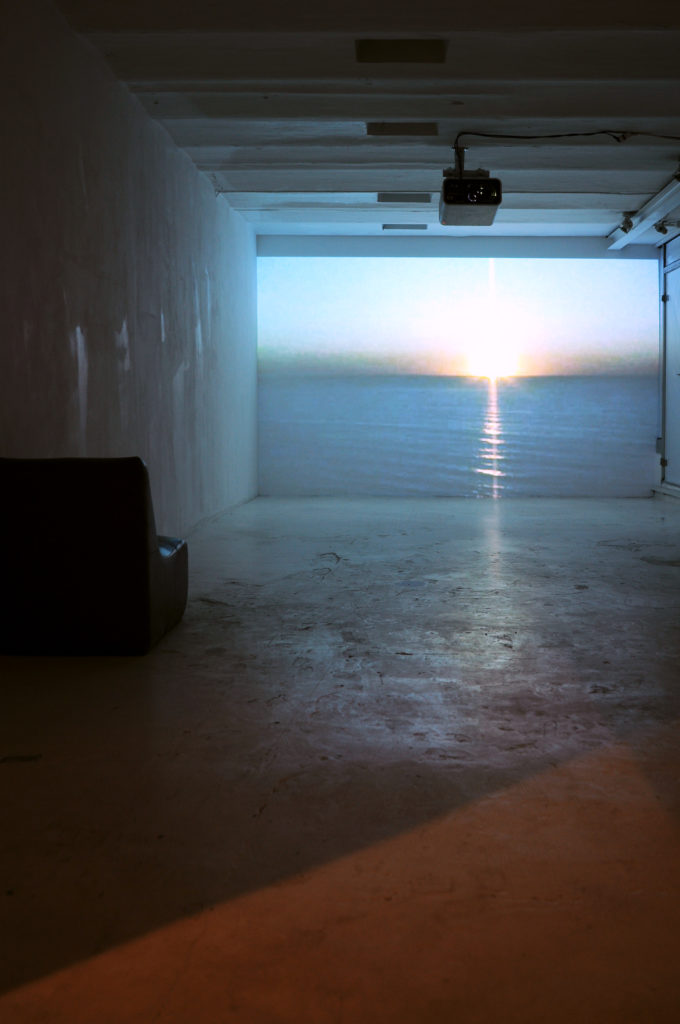
Les visiteurs du soir
Texte – Fiction
Exposure Adjustment on a Sunset
Vidéo HD – 2009 – muet – 35 min (boucle)
« Exposure Adjustment on a Sunset » est une œuvre vidéo d’Artie Vierkant exposant un couché de soleil sur l’océan, filmé en un plan séquence de 35 minutes, en temps réel. L’image se décompose progressivement à mesure que l’algorithme de « réglage d’exposition » de la caméra s’efforce de maintenir une luminosité constante face à un atmosphère de plus en plus sombre. Une agitation violente s’installe progressivement dans ce qui devrait être une scène de contemplation apaisante – jusqu’à dégénérer en un spectacle lumineux accidentel et psychédélique.
Exposure Adjustment on a Sunset
Video HD – 2009 – mute – 35 min (loop)
“Exposure Adjustment on a Sunset by Artie Vierkant is a 35-minutes real time video of the sun going down over the ocean gradually breaks up as the camera’s ‘exposure adjustment’ algorithm struggles to keep the light constant in an image that is fading to black. What should be a calm bath for the eyes becomes increasingly, violently agitated— an accidental psychedelic light show.”

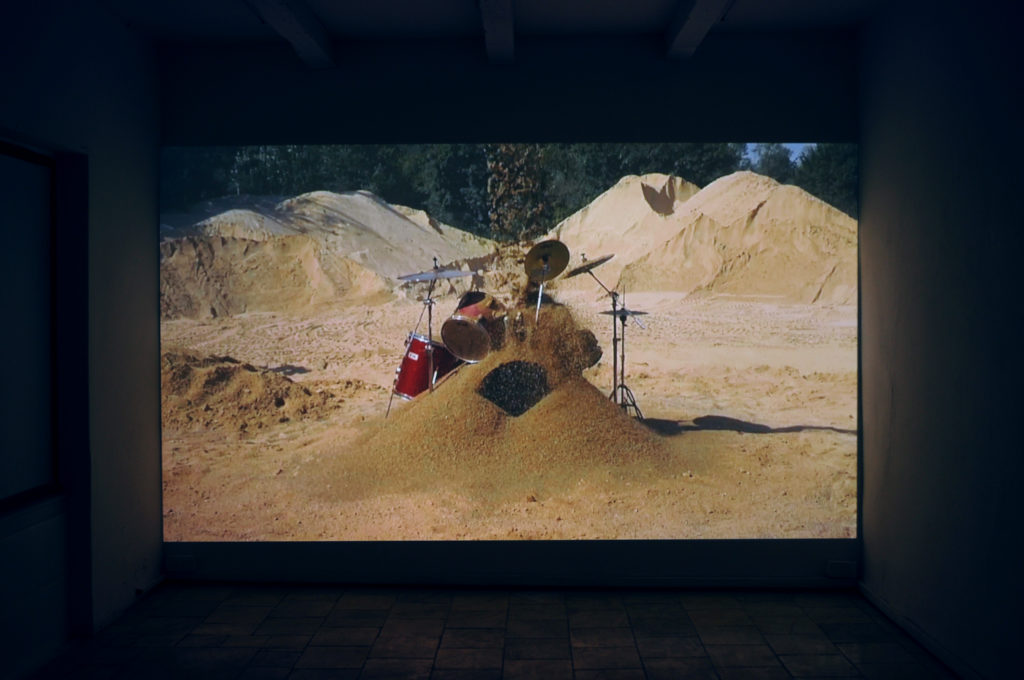
Resurrections
Harm Van Den Dorpel, boucles vidéos sd, muet, 2007 (série)
Resurrections est une série de sept animations réalisées à partir d’une collection de photographies prélevées sur l’internet. Compilation d’individus endormis, plongés dans un coma que l’on soupçonne éthylique, avec ce travail Harm Van Den Dorpel s’empare des ressources internet les plus triviales pour leurs insuffler une vie artificielle en appliquant le procédé littéral de l’animation. Malgré eux, les corps figés prennent progressivement leur autonomie pour entrer dans un état de lévitation. La série des Résurections propose ainsi d’observer le miracle d’Internet et permet à ces néo-fantômes piégés à jamais sur le réseau de s’échapper du contexte de leur prise de vue.
Resurrections
Videos – 2007 – mute – loop – (series)
Resurrections is a series of seven animated collages based on photos found in the Internet. Are these persons sleeping, are they drunk, dead, ghosts? The still bodies, hiding in the web’s underground (but found by the artist), are getting slowly dismantled. As ectoplasms, the dematerialised souls of these anonymous subjects begin to float away, out of their frame, away from their fate.
Fade Out
Paul Destieu, vidéo HD, son stéréo, 12 minutes, 2011
« Fade Out » ou « fondu de sortie » est un terme technique utilisé en audiovisuel comme en musique désignant une transition ou une fin : une baisse du niveau sonore jusqu’au silence, une disparition de l’image jusqu’au noir. Le projet s’inscrit comme la représentation de cette transition progressive entre deux états, sous la forme d’une video dans laquelle dimensions sonores et visuelles entrent en tension. L’oeuvre met en scène l’ensevelissement progressif d’une batterie acoustique sous une coulée de seize tonnes de gravier. Chaque impact est amplifié au contact des différentes parties de l’instrument. La coulée produit une composition rythmique radicale qui au fur et à mesure se transforme en un étouffement.
Fade Out
Video HD – 2011 – stereo sound – 12 min (loop)
Fade Out is a technical term both used in cinema and sound as a transition or an end: the decrease of a signal until silence or complete disappearance. The scene focuses on the progressive burying of a drum set under a gravel flow where each impact is amplified and recorded as crashing on the different instrument’s parts. The sequence proposes the immersive experience of a raw technical process, by materializing the transition between two states. The flow produces a rhythm section which slowly turns into a sound and visual chocking.
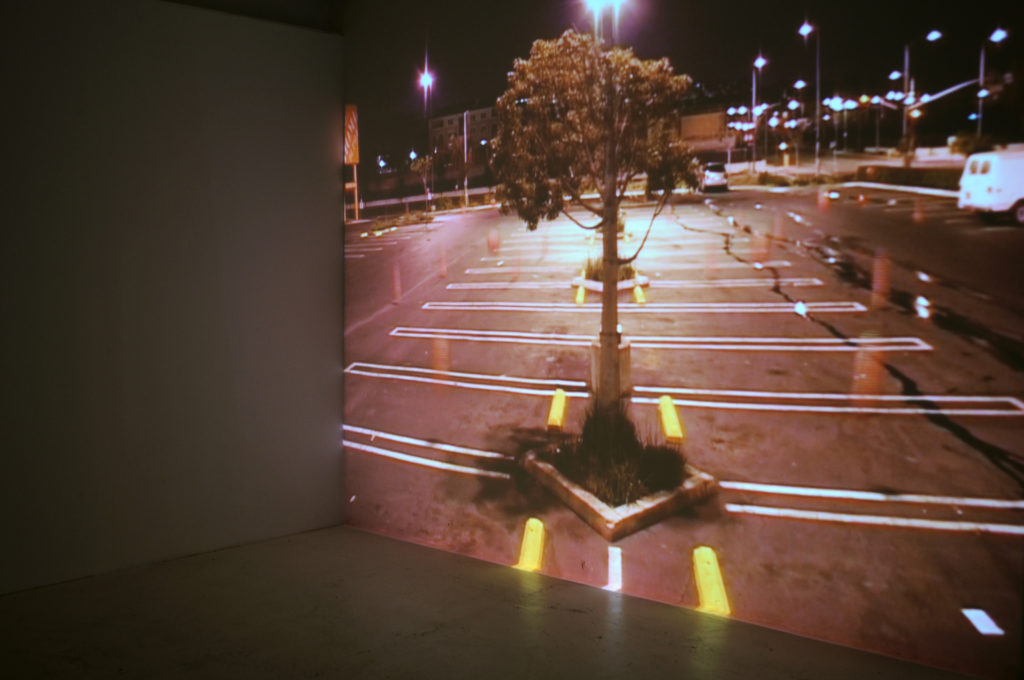
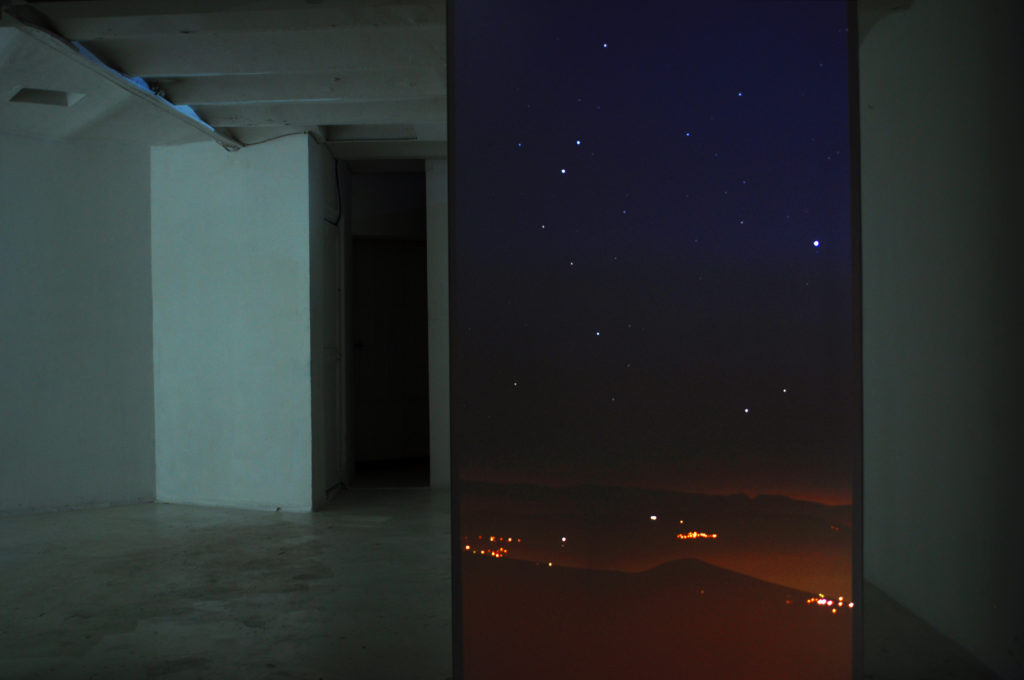
28 Years in the Implicate Order
Vidéo, son stéréo, lecture en boucle, 2005
L’oeuvre 28 Years in the Implicate Order, dans laquelle 28 ballons rebondissent de haut en bas dans un chaos apparent, défie le spectateur dans sa compréhension de la réalité et de la fiction. Au fur et à mesure du déroulement de la boucle, les balles s’alignent progressivement et se synchronisent le temps d’un rebond, avant de retomber dans un état de chaos.
28 Years in the Implicate Order
Single channel video loop.
The video consists of a locked off shot of an empty parking lot. A centered sodium vapor light illuminates the night landscape. 28 red balls bounce up and down in a chaotic random order. As the video reaches its mid point, the balls align themselves until they reach the point where they all bounce at the same precise moment and then resume to go back into chaos.
Volta
Vidéo HD, 70 minutes, 2012
Volta expose un point de vue statique sur notre monde en mouvement. Le projet est axé sur l’usage d’un trépied motorisé à monture équatoriale utilisé par les chercheurs scientifiques en imagerie astronomique. Ce matériel méconnu au mécanisme pourtant simple dont l’axe motorisé est réglé sur celui de rotation de la Terre permet en effet de compenser le mouvement de la planète, notre mouvement propre et imperceptible, et apporte à l’étude des astres une « fixité » paradoxale. Alors que le paysage qui nous est familier glisse peu à peu hors du cadre de l’image, l’univers étoilé reste, et avec lui notre point de vue extra-ordinaire, dans un statisme exempt de gravité terrestre.
Volta
Video HD – 2011 – mute – 71 min
Volta is a ‘real time’ video shot at the space Observatory of Haute-Provence in France. The surrounding nocturnal landscape is filmed on a specific tripod which counter-balances the rotational movement of the Earth, as if it was without gravity; the video shows a seventy minutes travelling, the Earth progressively slipping off-camera. “Volta gives a static point of view on our moving planet. The project’s particularity is the use of a motorized equatorial mount initially used by scientists for astronomical imagery. This simple tool’s motorized axis follows the exact rotation of the Earth. It thus compensates for the planet’s rotation (our own imperceptible movement) and makes it possible to study the stars in paradoxical lack of movement. While our well-known landscapes are slowly slipping out of frame, the stars in the sky keep stationary, as does the viewer’s sight of Volta, a new and weightless view on Earth.”
MAXIME BERTHOU
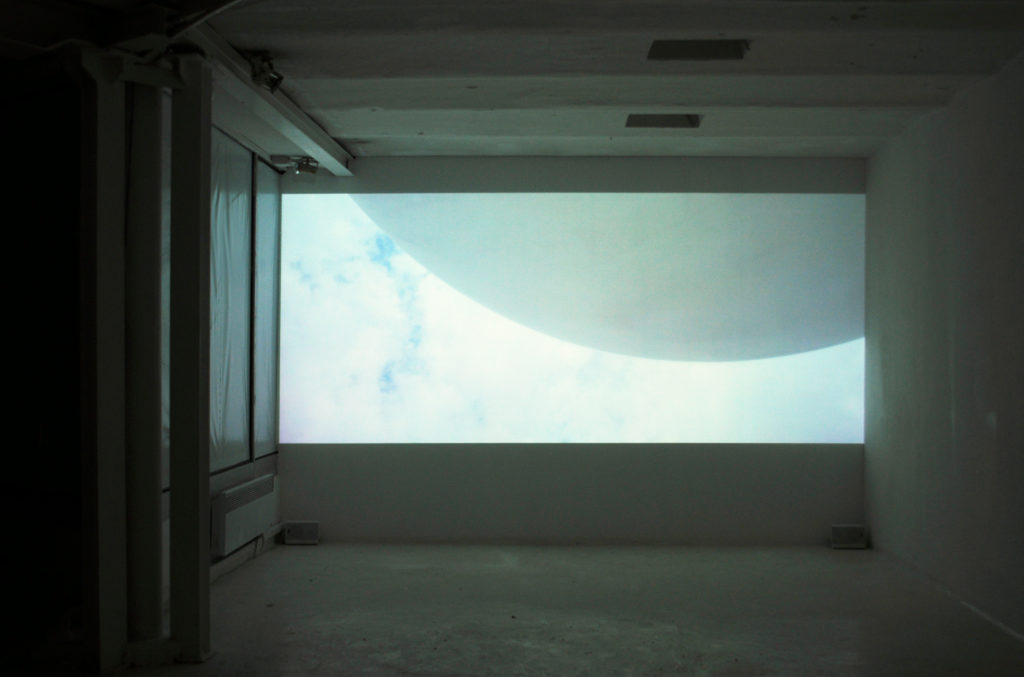
Paparuda
Vidéo HD, 13 minutes, 2011
Paparuda est le titre d’une performance publique consistant à déclencher de manière artificielle des pluies à la frontière entre les États-Unis et le Canada. L’objet de cette performance est de faire écho à un accident géopolitique survenu en 1949 non loin de l’endroit où les USA avaient ensemencé des nuages se déplaçant vers le Canada. À cette époque de sécheresse l’Histoire avait déjà soulevé le problème de la propriété du nuage et de l’eau qu’il contenait. Le Canada s’était alors plaint de s’être fait exproprier de cette pluie par ses voisins américains. À l’issue de cet évènement, Le Canada sous mandat de l’ONU, a ratifié le traité R.Q.c.P- 43.r1 légiférant les provocations artificielles des pluies en Amérique du nord. Depuis trois ans l’artiste Maxime Berthou tente d’obtenir l’accréditation du ministère de l’environnement Canadien pour pouvoir réaliser sa performance. Cette loi n’ayant jamais été sollicitée en l’espace de 51 ans, aucun juriste ni avocat fédéral n’est pour l’instant en mesure de l’appliquer dans le cadre d’un geste artistique.
Ces débordements juridiques, administratifs et politiques, viennent enrichir le propos de l’artiste qui tente ici de créer un jeu d’échelle dans la disproportion entre les besoins d’un projet et la familiarité de son sujet : une pluie.
Paparuda
Vidéo HD, 13 minutes, 2011
Paparuda is a video installation by Monsieur Moo featuring a public performance in which the artists unleash an artificial rain. Taking place above a boreal forest on the border of Canada and the United States – this artistic gesture makes reference to a geopolitical dispute between the two countries over the ownership of clouds.
Paparuda, act two of the Climate triptych, is the title of a public performance consisting in artificially triggering rain at the border between the United States and Canada. The purpose of this performance was to echo a geopolitical accident that occurred in 1949 not far from where the US had sowed clouds moving towards Canada. During a time of drought, history had already raised the issue on the ownership of the cloud and the water it contained. Canada complained at the time that the rain had been expropriated by its American neighbors. At the end of this event, Canada, under UN mandate, ratified the R.Q.c.P-43.r1 treaty legislating the artificial provocation of rains in North America. For ten years the artist Mr. Moo tried to obtain accreditation from the Canadian Ministry of the Environment to be able to carry out his performance. Since this law has never been exercised in the span of 51 years, no jurist or federal lawyer was able to apply it within the context of an artistic gesture.
These legal, administrative and political overflows enrich the artist’s point of view, who here tries to create a game of scale in the disproportion between the needs of the project and the familiarity of its subject: rain.

